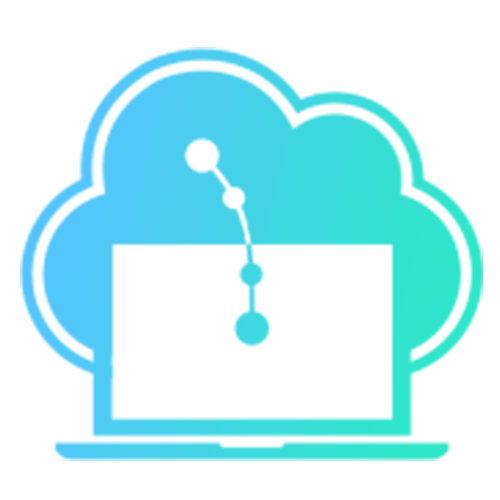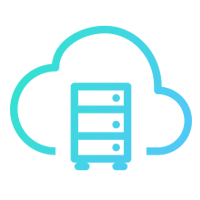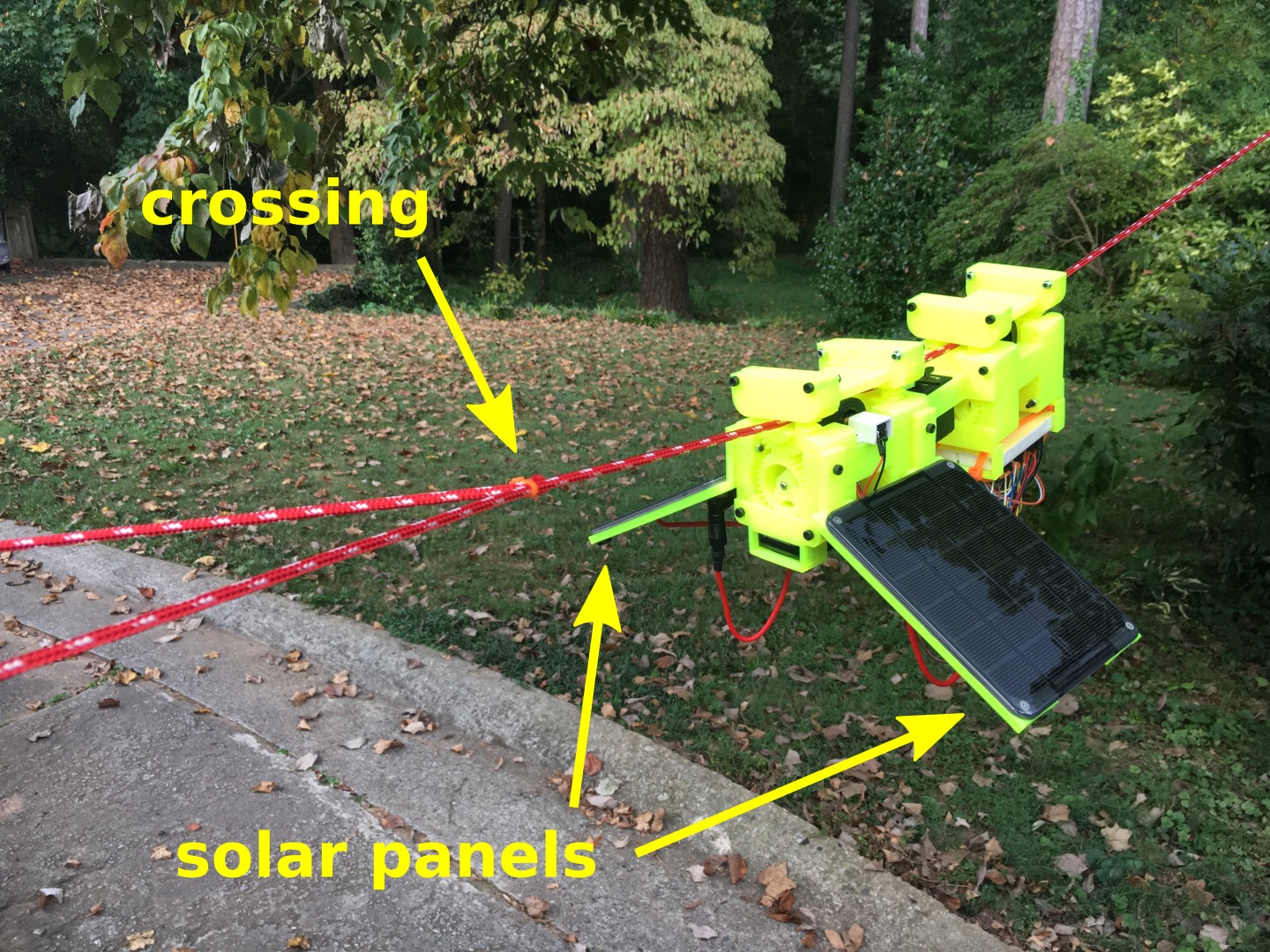Insights and Digilog
Digital-The Future
Organizations today are stepping up quickly to become more than what they already are. Digital Transformation is a key to that. What does the term digital mean? Digital is the way of engaging with customers.
- Creating value at the new frontiers of the business world
- Creating value in the processes that execute a vision of customer experiences
- Building foundational capabilities that support the entire structure.
Creating Value at New Frontiers
Creating values by means of understanding how customer expectations are developing inside and outside your business, outside your sector. This is crucial in getting ahead of trends that can deliver value.

Creating Value in Core Businesses
The next element of digital is to use new ability to enhance how customers are served. Each step of the customer’s drive in buy the products should be clearly understood by discerning how digital capabilities can design and deliver the best solutions and experience across all industrial sectors.
It’s all about implementing a dynamic process where processes and competencies are constantly evolving. This can be effectively done based on the inputs from the customer and by nurturing on-going product or service loyalty.
Future Workforce
All inclusive approach that creates the more productive and adaptive workforce, uses digital transformation technologies to reinvent the employee and enable organizations to be more active.
The digital transformation insists that people attain new skills and get new ways of working. These will be the two trends for new talent and organization strategies.
The Core Capabilities
-
 Proactive Problem Solving
Proactive Problem Solving
Relevance is the currency of the digital age. It requires decision making based on intelligence and relevance to the customer.
-
 Contextual Interactivity
Contextual Interactivity
Depends on how the customer is interacting with a brand and modifying interactions to improve customer experience.
-
 Innovation Focus
Innovation Focus
Helping customers well bestow organization to be innovative in how they interact to sell the product to customers.
Building Foundational Digital Capabilities
The final element of digital is about the technological and organizational processes that allow an enterprise to be agile and fast. A key aspect of digitized IT is the commitment to developing networks that connect devices, objects, and people. Digital is about unlocking growth now. Having a clear perspective of what digital means allows business leaders to develop a shared vision of how it can be used to capture value.Future – Proof Your Business With Digital Enterprise solution

Modern businesses are disrupted by an unprecedented spate of new innovations. There is no second thought that existence and business have become strenuous. Each and every enterprise in this information era focuses on enhancing their productivity and overall business structure by integrating the latest technologies. Interestingly when it comes to certain industries regulatory policies are complicated and hence decision making becomes tedious. Even with this technology advancement companies are still dealing with same issue and they are fumbling. But we have not seen many companies choosing the right innovation and still struggling to choose a right one. Digital transformation has reformed in numerous ways globally.
The adoption of state-of-technologies and Digital Enterprise Solution has reformed enterprise management and its functions. Each organization and its functions are unique. As technology advancement is rapid, many companies are under tremendous pressure to deploy new technology for their process. Be it any company, irrespective of its size they should be prepared to face the new challenges from the customers. Adapting and embracing digital is more than an afterthought for today’s business. We all face critical choices today, be a disruptor or be disrupted. While we analyze the options, every advanced digital solution will make your process simpler and minimize the errors.
Take Advantage of Digital Enterprise Solutions
Digital Enterprise Solution allows the companies to compete and effective deliveries to its clients in the dynamic market. This brings a radical change in the organizational process which extensively steers company success, focus and aims to enhance organizational practices with advanced technologies. According to the latest study, 87% of companies have acknowledged the importance of Digital Enterprise Solution and its advanced strategies. Most of the companies have already embraced digital enterprise solution, while other remaining companies are preparing for the future. Experts claim Digital Enterprise Solutions not only improve the company’s coherence but also increase the revenue by 20%. Digitalization and advanced technology have opened up new opportunities and improve customer experience.

Better Customer Experience
Customer experience is one of the major aspects of all businesses which assure success. This solution has adopted the latest technology and has developed advanced strategies to enhance user experience. This service helps the user to retain, acquire and assist more cost-effectively.

Profitability and Efficiency
Profitability and efficiency are the two most important factors which determine the strong business. Digital Enterprise Solution transforms the process to automation by which it will drastically enhance the speed and accuracy of the process. It improves business functional operation with digital advancement which is cost effective and improvises sales flow. Over 20% of the operating cost is reduced, by which it enables cost management and implies effective control of the sales process and production. Digital Enterprise Solution allows the organization to start other new models and generate more revenue.

"Experts claim Digital Enterprise Solutions not only improve the company’s coherence but also increase the revenue by 20%"
"According to the latest study, 87% of companies have acknowledged the importance of Digital Enterprise Solution and its advanced strategies"
"With world-class technology and industry- proven expertise, NEXT Inc is excellently positioned by delivering substantial progress in digital"
"It improves business functional operation with digital advancement which is cost effective and improvises sales flow"
"It will eliminate unwanted over-head expenses related to the outdated system and solution"

Consolidates Operations
By adopting customer-centric and the cost-effective digital solution, it will help the organization to streamline the entire process. Amalgamating the operation and process connecting the wider audience and empowers businesses. Meanwhile, it will eliminate unwanted over-head expenses related to the outdated system and solution. As per a recent survey on Digital Enterprise Solution, it boosts the entire important department to collaborate as a whole for the communication. It also provides the organization with accurate data metrics and data analysis for any further process.

Good Market Penetration
Refined decision making and better efficiency effectively rise market Penetration. By this, the organization can build a strong loyal customer base and helps in adding the new customers and explore the unexplored markets. This allows businesses to uncover more flexible and agile methodology based on various customer parameters.
Conclusion
Reforming to Digital Enterprise Solution can be a complex process for many businesses. If you are thinking about adapting to Digital Enterprise Solution, consult NEXT Inc. With world-class technology and industry- proven expertise, NEXT Inc is excellently positioned by delivering substantial progress in digital transformation. We offer various advanced IT transformations which are vital in this digital business era. We leverage emerging technologies with insightful capabilities to facilitate and modernize enterprises. So what are you delaying for? Think about shaping the future of your business.
Cloud Technology - Private Cloud for a Digital Infrastructure

Cloud computing has taken the technology industry by storm. It has emerged as an imperative service, essential for enterprises to connect the world digitally. Enterprises who fail to adopt this technology cannot sustain tomorrow's cloud computing market. Increasing adoption of wireless networking, cost efficiency and scalability will further propel the growth of this market. Eventually, the cloud is becoming one of the significant business sectors for many technology companies including Google, Microsoft, IBM, Amazon, etc. Cloud computing will provide the Digital infrastructure of tomorrow's cities which will serve the skyrocketing population. From smart parking lots to driverless cars, everything will be integrated and managed with cloud computing. Capacity planning, organizational agility, and cost reduction are the main business drivers for cloud technology.

What is Cloud Computing?
Cloud computing is the on-demand availability of computer system resources including computing power and databases over the internet. The data are stored in a "virtual space" rather than a local server allowing the user to work from any hosted service. Here the internet becomes the cloud and all the applications & software can be stored, managed, and processed from any internet connected device.

Service Models of Cloud Computing
Cloud computing consists of three types of services delivered remotely to clients via the internet:
-
-icon.png)
Infrastructure as a Service (IaaS)
IaaS (Infrastructure as a Service), is the self-service model of cloud computing. Here the user can monitor, access and manage remote datacenter infrastructures, such as compute, networking services and storage. This model provides a customized infrastructure based on the requirements and utility of the consumers. The IT resource provided by this service model is not pre-configured which allows a high level of control over the cloud-based environment the user intends to create.
-
.png)
Platform as a Service (PaaS)
PaaS (Platform as a Service) delivery model is pre-configured and deployed with ready to use IT resources. Through this service, developers can work effectively without the administrative burden as it contains the pre-packaged products and tools. The software components are built -in and reduce the number of necessary coding.
-

Software as a Service (SaaS)
Software as a Service (SaaS) has the largest cloud market and a kind of web-delivery model where applications can be run directly from a web browser without any downloads or installations required. This model requires very limited administrative control as all the IT resources are provisioned by the cloud provider.

Key Difference- IaaS, PaaS, SaaS:

Deployment Models of Cloud Computing:
Here are the various types of cloud computing deployment models:
-

Private Cloud
-

Public Cloud
-

Hybrid Cloud
-

Multi Cloud
Cloud Computing for Digital Enterprises
Enterprises are in an urge and eager to modernize their business and undergo a digital transformation. Innovations of new business models are essential for digital transformation. This transformation is spurred by the cloud technology which acts as a catalyst for innovation. Enterprise cloud solution provides all the resources required to perform business in an integrated manner. This happens within the framework of the cloud architecture that delivers a suitable solution. An enterprise cloud solution can be performed in a private cloud or in a public cloud. Each cloud computing service and deployments models provide a different level of management, control, and flexibility.
NEXT EXOS Private Cloud Platform
It is a hyper-converged platform allowing the enterprise to run Virtual Machines and Container Based Workloads. NEXT, private cloud solution gives you more control over your cloud infrastructure, so you can manage your resources in real-time independently. The rapid elasticity enables flexible ramping capacity as needed. Resource pooling can be done in a private cloud where tenants share resources that are dynamically allocated and provisioned. The intelligent platform offers data center consolidation, rationalization of OS, and virtualization of stack servers, storage, and network.

Virtual Machines
The Platform is an integrated software/hardware providing distributed compute, storage and network allowing the organization to consume the infrastructure in a more efficient, agile, self-serving manner. EXOS provides a unique layered approach in segmenting the cloud and its dashboard provides a consolidated view of the entire cloud. It’s control board provides relevant controls and analytic board provide appropriate information’s. It will assist the infrastructure owner in taking an informed decision quickly.
Containers
A container is a standard unit of software that packages up the code and all its dependencies so the application runs reliably and quickly from one computing environment to another. A Docker container image is a lightweight, standalone, executable package of software that includes everything needed to run an application: system tools, system libraries, code, runtime, and settings. NEXT, EXOS platform allows the enterprise in running Container Workloads. It runs Docker containers. The enterprise will be able to create Docker Swarm Similar Environment, Host, and Stack. The Stack can be orchestrated to auto-scale based on the set threshold.
What makes NEXT EXOS platform different?
NEXT EXOS robust set of infrastructure solutions provides consistent experiences with high speed, reliability, and productivity. Our private cloud platform differs from other cloud providers in a variety of ways. Below are some highlights:
-

Self-service
EXOS Platform Management Portal allows users to consume the cloud in a self-service manner. This eliminates the need of App Developers Contacting the Infrastructure Administrator for Resources. Based on the Quota allocated, the Users of the Department, Organization will consume the infrastructure.
-

Private Registry
EXOS Platform allows an enterprise in setting up a private registry. The private registry will house all the containerized application images. This is similar to Docker hub except that it is hosting the images specific to the enterprise. The Private Registry is configured to house private Docker images which are proprietary to the enterprise.
-

Application Stack Visibility
A stack is a group of services. Stacks can be used to group together services that implement an application. It defines a basic service as one or more containers created from the same image. Service (i.e. consumer) linked to another service (i.e. producer) within the same stack are made discoverable to the “consuming” service.
Wrapping up
The future of cloud computing will be expansive and powerful. For enhanced security and cost-effectiveness, cloud computing is an incredible option for enterprises. Due to its on-demand usage, ubiquitous access, multitenancy and resource pooling, elasticity, measured usage, and resiliency cloud technology is imperative to build a sound Digital Infrastructure
Whether it is VM based workload or container based workload, NEXT EXOS platform has got it covered.
Gear Up Your Digital Business Transformation

Digital transformation is predominantly used in the present business context. Digital business transformation is happening on a scale and companies across the globe are striving hard to change their business models in response to digital technologies. Plenty of CEO's want to transform their businesses as they perceive digitalization as an inevitable constituent for today's digital realm. Gartner survey January 2019 reveals that62% of businesses have a transformation program to make their business more digital. In the scope of this digital transformation overview, digital transformation is not just about disruption or technology. Rather it revolves around new competencies and business dimensions. Transformational efforts to become more digitally savvy are often done in an ad hoc manner, without an overarching structure or strategy. As per the 2019 Gartner survey, more than 70% of managers say their company is less than halfway through a business model change and are dissatisfied with the current transformation efforts. Businesses get stuck on their transformation journey and the problem is the snail’s pace at which that change is occurring. There is a lack of clarity about the right business model change. Changing market dynamics and blurring industry boundaries are yet another impediments faced A holistic approach with present and future shifts in mind can solve the problem. This needs a staged approach with a clear roadmap and shared understanding among the stakeholders. This approach can be daunting, the future state of the business should be accessed first and connected with the current business. The transformational vision for the future should be made diligently without jeopardizing the existing business. .
Business Model Transformation
The business life cycle is dabbling across industries, creating an alarming imperative to innovate and to remain relevant in the highly volatile and ambiguous world. Inventing a new business model isn't a child's play. The proposed new business model should be deliberately connected to other model components to boost the firm’s competitiveness. Firstly, embarking on business model transformation is one of discovery. The functional leaders should explicitly understand the need, purpose and the method of transformation. Clarity and visibility are essential elements to propagate the business model change. The rise of new digital technologies and the disruption that brings to the market should be analyzed before the execution of the business model change. Digital or not, the business model change should include four components:
-

Value proposition
The implied promise a company makes to its customers regarding the value of products and services.
-

Customer
Individuals who purchase your product and services. The value proposition is made based on the customer analysis.
-

Capabilities
Recognizes value and measure costs associated with the necessary capabilities.
-

Finance
Recognizes value and measure costs associated with the necessary capabilities.
"More than 70% of managers say their company is less than halfway through a business model change and are dissatisfied with the current transformation efforts".

Transformation Requires a Paradigm Shift
The new paradigm has the companies to focus on broader sets of options and simultaneously anticipate future business model changes. Going digital involves all aspects of the business from customer experience, operational process, and business model change. It includes a paradigm shift in systems and process integration:
- Enabling targeted analytics for deeper and sound decision-making.
- Shared knowledge and information among the functional leaders and executives.
- Tracking and monitoring the entire shift process for better performance.
- Adapting to resilient business models to trigger the transformational process.
- Leveraging and capturing real-time data to enhance & improve customer experience.
Digitalization requires a paradigm shift and a different way of discovering and interpreting which is called as "discontinuous learning".
Discontinuous Learning
Discontinuous learning is found to be more effective as it unveils new market dynamics that require new business models. This discontinues approach is well suited for the fast-paced and unpredictable digital era. When compared to a traditional business approach, discontinuous learning reduces the reliance on historical assumptions. Hence the discontinuous approach forces the business to rethink and deeply investigate the current business model and help uncover the future unknowns. It further propels the understanding of digital change required for the business. Therefore, the functional leaders can develop business pilots in a targeted and disruptive way. Discontinuous learning catalyzes transformation efforts. Research shows that businesses that opt for the discontinuous learning approach achieve 10x digital business transformation goals of those taking a traditional approach.
Deconstruct business models
The business model is the core of any company's marketing strategy. A viable business model is essential for digital transformation. To explore the potentials of business initiatives, companies deconstruct the business model test and disperse them in different markets. Deconstructing and innovating new business models provide valuable knowledge that can make a full pilot more successful. Such pilots developed must depict and resonate with the purpose of the business, technology infrastructure, human and physical resources, organizational structures, and strategies along with other business elements relevant to the enterprise.
Wrapping-up: Winners take a different approach
Digital transformation even goes beyond the use of digital technologies. Despite all the technology it’s still about (digital) customer experience, stakeholder experiences or the human dimensions, empowered by processes, information and from transformational technology to transformation economy. Not all transformation leads to success, winners understand this and take a different approach. To stay ahead of the curve winners, follow the "discontinuous learning" approach and deconstruct their business models to suit the fast-paced digital evolution and stay in line with the digital transformation.
How HCM Can Boost a Company’s Overall Success

In any organization, functional or organizational operational has to be adroit. For this accomplishment, work force is quite essential. Therefore, work allotment and assigning people with right skill is indispensable. The fulcrum of all people related activity is associated with Human Capital Management (HCM) department. Activities such as career enhancement, onboarding, leadership expansion, and hiring - all that mentioned have a great influence on the organization's success. Consequently, Human Capital Management (HCM) directly or indirectly influences roughly all the aspect of the organization's financial administration and overwhelmingly impacts profitability. But often times it becomes quite exhausting to validate this fact, being employee power as the prime metric all these are seldom determined. To streamline all these processes a robust HCM (Human Capital Management) solution should be in place.
"NEXT Inc's Human Capital Management System (HCMS) has created evolution and respective teams are getting adapted to this sophisticated solution, which helps in coordinating people analytics".
NEXT Inc's Human Management Capital System (HCMS) has created evolution and respective teams are getting adapted to this sophisticated solution, which helps in coordinating people analytics, demonstrating, and measuring the employees' impact on the financial aspect, which in turn boost overall profit. In this digilog, we have listed out utmost challenges faced by organizations and the solutions to overcome the challenges.

Acquiring the Suitable Talent
Recruiting the right talent is one of the major tasks for Human Capital Management. Hiring creates a positive impact, which immensely influences the organization to accomplish and move to significant heights. If the recruitment process goes on without any proper process it will miserably fail which will lead to heavy loss. So companies should start investing in comprehensive solutions to get to the desired result. The recruitment process involves several stages of filtering the candidates. So each stage has to be monitored and recorded to know their achieved output. By tracking these results, one can easily identify the right candidate for the work. All this process can be done hassle free by implementing cogent NEXT Inc’s Human Capital Management System. Human Capital Management System (HCMS) will organize and streamline the recruitment process.
Deciding on Pay and HR Laws
Money is the predominant factor in any organization. Each candidate's pay and expectation varies. At the same time, organization would have their privacy policy and other constraints. So all these should coincide and the person's expectation should also be considered. In a general system, an employee's salary includes basic pay with other benefits such as insurance allowance, incentives, etc. These pay values will vary for different pay levels. Irrespective of any pay scale or different package structure, NEXT Inc's HCMS (Human Capital Management System) will take the entire process in one shot. It will orderly process each task without any great deal of effort and will maintain each payroll. Processing the payroll calculations manually can be gruelling and easily prone to miscalculations. It will automate the process accurately and error-free.


Performance Monitoring
Monitoring each employee’s performance is very complicated. Everyone has a different type of tasks and roles to perform. This has to be monitored accurately so that it can be considered for any type of performance appraisal or yearly bonus. Using a standard set for indicating performance, setting a task-based business insight is very important. Most people avoid these metrics because of uncertainties without any solution in place. They try to evaluate manually. However, manual evaluation will not show the exact result or the scenario. So many organizations just stick with the base report analysis. These reports will be not helpful for the longer duration as they might clog corporate reporting standards. To solve the problem, NEXT Inc's HCMS (Human Capital Management System) provides a strategic and qualitative performance management approach in which overall objectives are defined on the basis of four perspectives- Financial, Customer, Learning, and Growth.
Development and Training
In this rapidly changing environment, companies have to evolve accordingly. Training and development for basic level employees is an unsolved issue in Human Capital Management (HCM) department. Many companies don’t invest their time and money in this training and they don’t maintain any track of it. Since companies, keep updating the technologies training is necessary for any employees. So they continue to face this challenge without a solution in place. NEXT Inc's Human Capital Management System (HCMS), Learning & Development aligns learning activities with competency gaps thereby arming the workforce for current and future needs. It facilitates analyzing the skill gaps, identifying techniques to bridge the gaps and enables continuous monitoring of improvements.


Succession Planning and Reassignment
Large or small, every organization faces challenges in succession planning. Functional leaders fumble to find the right talent and allocate in the right role. Identifying the potential candidate and deciding who to promote in the succession process is a daunting task. Planning ahead to identify characteristics required for a successor will ensure the candidate with skills best suited for the job is selected. NEXT Inc's Succession planning is more methodical and it provides a visual comparison of the incumbent for the proposed role competencies. It identifies nurtures and develop the talent to take on increasingly greater responsibility and leadership in the organization.
Workforce Administration
Organizations with multiple departments and employees struggle with workforce administration and management. Business leaders aim to maximize performance and competency across the organization. Despite the efforts, workforce management often falls short of its goals due to the inefficiencies in time & attendance tracking, scheduling & rostering and asset management. To tackle the problem, NEXT Inc's Workforce Administration provides a unique solution that enables compliance tracking with reviews. It is designed to efficiently manage and execute day-to-day organizational events such as work time/shift setup & mapping, attendance tracking & monitoring and asset management.

Conclusion
NEXT Inc's Human Capital Management System (HCMS) assists in establishing a happier work environment. Our Human Capital Management System (HCMS) also covers Leave Management, Compensation Management, Talent Management, Workforce Planning, and Exit Management. It takes charge of the entire Human Capital Management process while merrily you can look after your employees. Well advanced NEXT Inc's HCMS works adroitly for any sized organization.
Are You 5G-Ready?

Wireless connectivity has now become an integral part of modern life as we move towards a new digital rea. The next generation telecom network-5G have started hitting the market and expected to expand worldwide. It is the fifth-generation advancements made in the mobile communication systems and will provide a far higher level of performance than the previous generations. The new 5G mobile communications system offers high speed, immense capacity, IoT (Internet of Things) capability, and low latency. It allows a highly flexible network (flexible channel bandwidth between 5 and 20 MHz, optimally up to 40 MHz), and Dynamic Ad-hoc Wireless Network (DAWN). The 5G networks consist of Millimeter-wave bands and massive MIMO (Multiple Input Multiple Output). Millimeter wave bands occupy frequencies between approximately 30 – 300 GHz offer speeds as high as 20 Gbit/s. The massive MIMO technology reaches speeds of 490 Mbit/s at a bandwidth of 3.5 – 4.2 GHz. Hence, it provides lightning fast speed and incredibly low latency.
"5G is a real wireless world called WWWW: World Wide Wireless Web".

From 1G to 5G
Back in the 80’s we had the first generation called 1G, which used an analog telecommunication standard. Later it was replaced by 2G- the second generation of wireless telecommunication which has launched the GSM (Global System for Mobile) standards. In the 90's 3G was introduced with fast internet speed, video calls, mobile TV, etc. 4G was later rolled out with LTE (Long Term Evolution) standard, which had HD videos, gaming and video conferencing. Now the 5G technologies have been in the development focusing on enhanced mobile broadband, fixed wireless access, and mission-critical control.
5G Technology Highlights:
- 5G is a real wireless world called “WWWW: World Wide Wireless Web".
- Data can be sent much faster than the previous generations.
- A real wireless world with no more limitation to access and zone issues.
- Wearable devices with AI capabilities.
- High altitude stratospheric platform station (HAPS) systems.
- Internet protocol version 6 (IPv6), where a visiting mobile IP address is assigned according to location and the connected network.
Implications of 5G for mobile operators
With the advent of 5G technology, Mobile Network Operators (MNO) will be able to develop & operate new IoT (Internet of Things) services beyond providing network services. MNO's will face a new challenge in implementing the 5G while keeping 3G and 4G networks operational in connection to the ability of frequencies in the spectrum. Moreover, MNO's are in need to capitalize to own the 5G space and to stay ahead of the competition. While a shift to 5G would impact hugely, the industry will need to overcome a series of challenges to harness the benefits particularly in terms of spectrum and network topology.

5G and the world
5G means a lot just more than faster mobile internet. Smart home with a smart speaker in the room & smart lightings and smart cars with sensors & apps are examples of IoT (Internet of Things) revolution backed by 5G technology. 5G phones and sim cards are all set to launch in the year 2019. A new IoT(Internet of Things) ecosystem will be created by 5G networks with more ubiquity, more mobility, and more performance. 5G users will be able to seamlessly enjoy 5G roaming experience on visited networks. Japan target is to use 5G technology for the 2020 Tokyo summer Olympics- driverless taxis for the guests, facial recognition system. and 5G ready baseband network.
NEXT Digital Telecom and 5G
NEXT Digital Telecom brings digital transformation in our networks to integrate SDR and virtualization patterns, investing heavily in analytics, automation, and other technical innovations that will transform overall digital telecom business. The Digital telecom service provider will drive the future telecom needs. Our Digital services are equipped with solutions for todays & upcoming technological landscapes and also have expertise in migrating to the latest offered telecom service- 5G technology to enable massive IoT connectivity, higher throughput, and latency.
The Takeaway
5G technology offers a high resolution for crazed mobile users and bi-directional large bandwidth shaping. It supports almost 65,000 connections with large broadcasting of data in Gigabits. The connectivity speed is expected to be 25 Mbps. 5G technology will be commercially available worldwide in the early 2020. It is time to embrace the transformative new technology and be ready 5G ready!
SlothBot: A Robot Designed For Environmental Monitoring and Conserves Energy

Researchers at the Georgia Institute of Technology have found a new robot dubbed the "SlothBot" for tracking environmental changes while conserving energy. This robot is used to predict weather and chemical factors in the environment. The proof-of-concept hyper-efficient robot, described May 21, 2019, at the International Conference on Robotics and Automation (ICRA) in Montreal. In robotics, there are faster and extreme robots capable of doing complex serious of actions automatically. But there are many applications where there is no need to be fast. You just have to observe persistently on what's going on. Here is why "SlothBot" comes in and moves only when necessary- to monitor environmental changes. This robotic sloth is purposely slow and designed to mimic the efficiency of one of the laziest creatures on earth the sloth.
Inspired by the Sloth
The life of a sloth is slow moving and stay in the same tree for years. Since they have a slow metabolism, they need very little food. The sloth moves slowly than any other mammal on Earth and they conserve energy as a well. Inspired by the lifestyle of the sloth, researchers have developed this environment-tracking robot. Many environment monitors like a flying drone need a lot of energy. The thing that costs energy more than anything else is moving. When it comes to environment robots, the movements should be restricted to conserve and save energy. Hence, the life of a sloth resonates well for a robot with fewer movements, persistence in a limited area and requires less energy.

"SlothBot is used for Environmental Monitoring, Precision Agriculture, Infrastructure Support, and certain Security Applications".
SlothBot Working Mechanism
SlothBot consists of two bodies connected by an actuated hinge. Each body holds a driving motor, linked to a rim on which a tire is mounted. It has two solar panelsand designed to remain in the forest canopy continuously for months. Hanging on a tress branch, it would move when necessary to track the environment changes and gain sunlight. The SlothBot consist of 3D printed gears and is designed to grip horizontally-strung cables with its battery-powered rubber wheels. It then uses those wheels to move along the cables, periodically switching from one cable to another within a linked network. Therefore, SlothBot is used for environmental monitoring, precision agriculture, infrastructure support, and certain security applications. There are enormous innovations happening around the globe and SlothBot is one of the mounting evidence for technology advancement. Next Inc is in the frontier of technology providing robust solutions for Agri-Industries to thrive.
NEXT Plantation Management System – NPMS
As agricultural production is dwindling, the farmers are in constant search for sustainable solutions. Bearing this in mind, we leverage technology to build digital farming solutions that allow farmers and other relevant stakeholders to make smart decisions on farming. NEXT Plantation Management System(NPMS) provides environmental monitoring including Micro Climate Analysis and Weather Reporting combined with GIS (Geographic Information System) technology. Sensor networks are used to observe soil properties and environmental factors.
The Final Word
SlothBot is a slow and steady inspiration. Photovoltaic panels to conserve energy is yet another striking feature of this prototype innovation.NEXT Plantation Management System (NPMS) is the most advanced and comprehensive plantation management system, which backs entire business for any size plantations. It simplifies plantation management with farm mapping, productivity estimation, spatial Intelligence, farm measurement through GIS technology, databank and historical information of farm. Not only for Agriculture, NEXT Inc, offers impeccable Digital Enterprise and Digital Infrastructure solutions to suit the modern business needs.
How to Choose the Right Human Capital Management System (HCMS)

Human resource management is an essential element for every organization. The management of human resources is a painstaking task. It is more daunting for HR professionals when the organization grows in size. It becomes a struggle to get a single view of employee data. From recruitment to separation there are lots of challenges faced by the HR team. Integrations demand too much manual effort to stay intact. As a result, the efficiency of HR processes drops dramatically.
The only solution to all these issues is implementing a human capital management system. A human resource management solution can help you manage all your HR activities more efficiently. It aids in avoiding duplication of data and get rid of redundancy. A top-notch HR software suite should be equipped with powerful reporting tools which provide absolute automation of all the HR activities. HR software is a must for every organization for sound organizational processes and resolves complex HR activities. If you are keen to find the best software for your organization, it is easy to get lost in the ocean of available products. This digilog will outline the significant pieces of information on choosing the right Human Capital Management System.
Automation of HR activities
The right Human Capital Management System(HCMS) will have all HR activities like recruitment, attendance, leave, payroll interlinked, making it easy to maintain records. With absolute automation, HR can save time used for multiple entries. All of the activities can be monitored single-handedly unlike when done manually. Thereby saving time and minimizing manual errors & frauds. This aids in eliminating the stress of work and the HR team can rather focus on other key activities for business advancements.
"NEXT HCMS (Human capital management system) has everything streamlined and all the information are available in the click of a button and stored securely".
Managing employees adroitly
Many organization has distributed workforce within each department and find it difficult to manage the employees. This task is now made simple with NEXT HCMS( Human capital Management system) which help store and retrieve all up-to-date, employee-related information, basic profile, employment history, performance, role, etc. All the information can be accessed anywhere, anytime to take workforce or organization-related decisions. Therefore a perfect HR software should help organizations to manage their employees adroitly.
Effective payroll solution
A payroll system is an important component for a business. It is imperative that a business maintain a steady and regular financial process by which they can pay their employees on time. A proper payroll system must include details of the employee’s salaries, incentives, bonuses, deductions, and net pay. An employer must maintain and keep these records as per law. An effective payroll system eliminates eliminating roadblocks in employee management. NEXT HCMS (Human capital management system) payroll system automatically generates payroll report monthly. It is useful in filing Tax forms and makes compliance easier.
Improving accessibility and reducing paperwork
A profound Human capital management system reduces the use of paper. This eliminates the manual use of files and cabinets for searching information. NEXT HCMS (Human capital Management system) has everything streamlined and all the information are available in the click of a button and stored securely. Thus reducing the cost in managing and storage of papers.
Informed decision making
HR software should provide intuitive analytics and diverse reports for all the HR related activities. This helps provide a better insight into the performance and working of the organization. This aids the management in improvising processes and streamlining workflow based on the analytics and improving decision-making abilities.
Transform HCMS
Transform HCMS is an innovative product built with the purpose to suit the modern organizations and employees. It involves systematic management of employee skills and qualifications, along with their career development to achieve optimum performance through Performance Management methods. HCM application is focused on understanding and creating a shared culture, designing a work environment that engages people, and constructing a new model of leadership and career development. The future of HCM( Human capital Management) is here, and forward-thinking companies can meet their objectives with workflow-driven integrated HR functions that empower employees, HR staff and key company stakeholders.
What is Docker and Why Should You Use It?

Docker exploded as the king in the container arena is becoming overwhelmingly popular. It has been emerging as a leading- edge technology in DevOps and Web Development. Before the invention of the Docker, maintaining multiple technology stacks across multiple environments was a nightmare. Migrating to different technologies, installation of packages & dependencies and upgrades was a worrisome process. To solve these "Matrix From Hell" challenge, Docker allows users to “pack up” their applications into a standardized container and deploy anywhere. This post will walk you through the importance of Docker and why should you use it.
What is Docker?
Docker is an open platform to build, ship and run distributed applications. The applications can run anywhere in spite of it being a laptop or a virtual machine. Docker enables you to rapidly deploy server environments in “containers.” It is the only container platform to build, secure and manage applications from development to production both on-premises and in the cloud. A Docker platform consists of Docker Engine, Containers, Images and Hub.
"NEXT EXOS Docker is an open-source project which aims to automate the deployment of applications inside portable containers that are independent of hardware, host, operating system, and language".
When to use Docker?
Docker can be used for application isolation if you want to run multiple applications on one server. If you have a developer team working with different setups, Docker can be used to collaborate and distribute the application's operating system with the team. Docker containers are very lightweight and consist of only binaries which are required to run a particular service. Docker will help reduce software maintenance and operational cost. It can be used as a version control system for your entire app's operating system.
Why should you use Docker?
-
Reproducibility
A Docker container is identical on any system that can run Docker. A Dockerfile has the exact specifications of a container. By distributing this file among team members, an organization can guarantee that all images built from the same Dockerfile will function identically.
-
Security
Containers offer the potential of more frequent security patching by making it easier to update the environment as part of an application update. They also minimize the effort of validating compatibility between the app and patches. Built on a secure foundation with support for every Linux isolation feature Docker containers are "secure by default".
-
Docker Hub
Docker hub consists of prebuilt images that help for the deployment of applications fast and simple. It is the best way to create, manage, and deliver container applications.
-
Continuous Integration
Docker works well as part of continuous integration pipelines with tools like Travis, Jenkins, and Wercker. Every time your source code is updated, these tools can save the new version as a Docker image, tag it with a version number and push to Docker Hub, then deploy it to production.
NEXT EXOS Docker
NEXT EXOS Docker is an open-source project which aims to automate the deployment of applications inside portable containers that are independent of hardware, host, operating system, and language. It also provides a registry for hosting private Docker images. EXOS Platform allows native integration with the CI/CD System Jenkins. Any Code Pushed to the Git repository will flow through the Dev ops Pipeline and will run on the EXOS Platform automatically. EXOS Platform provides a catalog of most popular application stacks like Jenkins, MySQL, Maria, GlusterFS, etc. These Application stacks can be provisioned in a click of a button empowering the developer community in getting the required services in instant.
Salient features and benefits
- Devops Culture with Integrated Jenkins CI/CD with Rollback and Upgrade Features.
- Private Registry to Host Enterprise Specific Docker Images.
- Catalog to quickly provision Applications in a click of a button.
- Faster time to market of the services/applications.
- Promote Micro Service Architecture in the Enterprise Application Development.
Final Word
Docker is a boon to both software engineers and DevOps engineers. It makes releasing software much easier as the whole stack is shipped not only the code. Prometheus Monitoring, Jenkins CI/CD Integration with Groovy Script, Stack Live update with own Websocket Server, Auto-scaling Feature using Ansible and webhook are irresistible features for every professionals to try the new EXOS Docker!
Digital Transformation for Oil and Gas Industry

The Paleozoic Era was the time which marked a great change on Earth. Severe mass extinction happened during this period resulting in the remains being buried inside the earth. Over the years impacted by high temperature and pressure these remains has become large fields of crude oil. This laid a great start for the oil and gas industry. Right from the start of world first commercial oil well the oil and gas industry has undergone tremendous changes. The industry is adapting digital transformation to improve productivity, efficiency, and increase cost savings. To be precise, we can say the industry is progressing towards digital maturity. This digilog will address the roadblocks and solutions for the oil and gas industry for a holistic digital transformation.
Challenges for the oil and gas industry
The oil and gas industry is seeing many ups and downs due to the fluctuating crude oil price. Now the industry is under pressure to adopt innovative methods and change business models. Here are the main challenges faced by the oil and gas industry.

Dwindling reserves
The global demand for oil is about 100 million barrels per day. To meet this demand, over drilling is done which in turn depletes the reserves that are unable to sustain the average output. The great challenge is the economic viability of extracting oil. Most of the large oil fields have reached peak production and finding new reserves are difficult.

High cost of safety
The oil and gas industry is one of the most hazardous industry due to the risk of fall, toxic exposure, material spillage, extreme weather, and explosions. Safety is a big concern, particularly for offshore operators. The cost of ensuring this safety is an expensive affair for the oil and industry sector.

High demand for renewable energy
The global pollution caused by the oil and gas industry and other global movements urges the companies to change their energy portfolio. Hence there is a high demand for renewable energy to reduce greenhouse gases and promote a cleaner source of energy.

Cost management
With depleting reserve the cost of production increases. Managing the price volatility is not a sustainable strategy as the industry is vulnerable to violate market conditions and geopolitics. Cost and production curves stand as the greatest challenge for a better ROI (Return on investment).
Transforming Oil and Gas to Digital
To overcome the above-said challenges digital transformation is necessary for efficient operations and to build new business models. Digital transformation will unlock new business opportunities for the oil and gas industries. Digital is a key enabler in the oil and gas industry to reduce costs, increase workforce productivity and make faster and better decisions.

Improve operational efficiency
As said earlier digital transformation enables greater operational efficiency. The industry can improve margins and reduce cost through smart use of technology, particularly for predictive asset management, and workflow automation. Real-time analytics is used to make better decisions on plant operations. Connected platforms with digital technologies and constant data availability provide seamless operational insights.

Reducing the cost of safety
Plant accidents could be fatal leading to the damaged reputation of the industry. Digital transformation help companies use robots and drones instead of human workers for inspections in remote, hazardous and inaccessible terrain, particularly when there is a possibility of toxic chemicals or gas. IoT (Internet of things) sensors are used to track and monitor employee location, health and provide a timely warning.

Agility to respond to market volatility
Agility is the core ingredient of digital transformation. In the current volatile climate conditions, digital transformation provides agile planning and better outcomes for the oil and gas industry. Agility helps upstream companies quickly scale production in keeping with market demands. The advance of digital technologies enable improve incident response time and quickly respond to market changes.

Increases capital profitability
Before the implementation of digital technologies, there was a construction inefficiency in the oil and gas sector. Computing techniques for reservoir modeling and 3D seismic imaging are now available which made drilling easy for the industry. Thus, the increased standardization of design, process, and equipment is improving production and eradicating incompetence across the value chain.
Digital technologies across the oil and gas industry
Here are the key technologies that transform the business model of the oil and gas industry:
- 4D seismic imaging
- IoT (Internet of Things)
- Big data and analytics
- AI (Artificial Intelligence)
- Blockchain
- Robots and drones
- Mobile technology
NEXT Production Data and Management System (PDMS)
Production Data Management System (PDMS) is a full-featured oil & gas production data management and reporting solution helping to solve the data management challenges faced by oil & gas operators. Our NEXT Digital Spatial allows displaying multiple fields across various regions including block boundaries, area size, forest area cover, population density, etc. The Spatial database includes information on well locations, completion zones, logs, operators, lease names, tests, hydrocarbon shows, samples, cores, geologic formations, and tops. Our GIS-based solution accurately provides well locations along with Well Tops and Reservoir Zones. Spatial Analysis includes Density Mapping & Neighborhood Analysis between each well location, production platforms, pumping stations, disposal points, and other infrastructure. Our PDMS (production data and management system) comprehensive reports include:
- Well Management
- Data Management
- Map Viewer
- Well Wise Report
- Field Wise Report
- LayerWise Report

Comments
Send Your Reviews : [email protected]